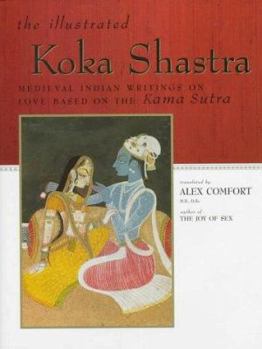Koka Shastra: Medieval Indian Writings on Love Based on the Kama Sutra
Select Format
Select Condition 
Book Overview
A translation of Indian writings cover all aspects of sex and love.
Format:Hardcover
Language:English
ISBN:0684839814
ISBN13:9780684839813
Release Date:September 1997
Publisher:Simon & Schuster
Length:128 Pages
Weight:1.85 lbs.
Dimensions:0.7" x 8.6" x 11.4"
Customer Reviews
1 rating
The Kama Sutra for a later generation
Published by Thriftbooks.com User , 20 years ago
There are two parts to this book, very nearly independent of each other even when they share a page: the illustration, and the text of the Koka Shastra. Kokokka's medieval text is heavily based on the older Kama Sutra, but differs from it in important ways. The biggest is that it very nearly isolates the act of physical love from every other part of life, where the Kama Sutra treats it as one of the many ways for people to enjoy each other's company. Another is that this later text seems much more concerned with social proprieties and taboos than the Kama Sutra. Although both books seemed aimed at a male readership in male-dominated societies, both do pay attention to a woman's wants and physical satisfaction. The Koka Shastra, however, puts the woman in a more subservient role, "wholly subject to her husband and honor[ing] him with word, heart, and body, as a god." The illustrations are very informative, but rarely have much to do with the text around them. They show a wide variety of couplings and love-play, in a wide variety of artistic styles. I was continually disappointed, however, by a near-total lack of information about them. When were they created? By whom and for what audience? What sources provided them? None of these questions are answered, and that detracts seriously from the book's value. Still, there's a lot to like in this book. The physical practices are interesting, whether or not each one is something that the reader might want to share in. The book's real value, however, comes from in its looks into the bedrooms and the thoughts of that distant time in India. //wiredweird







